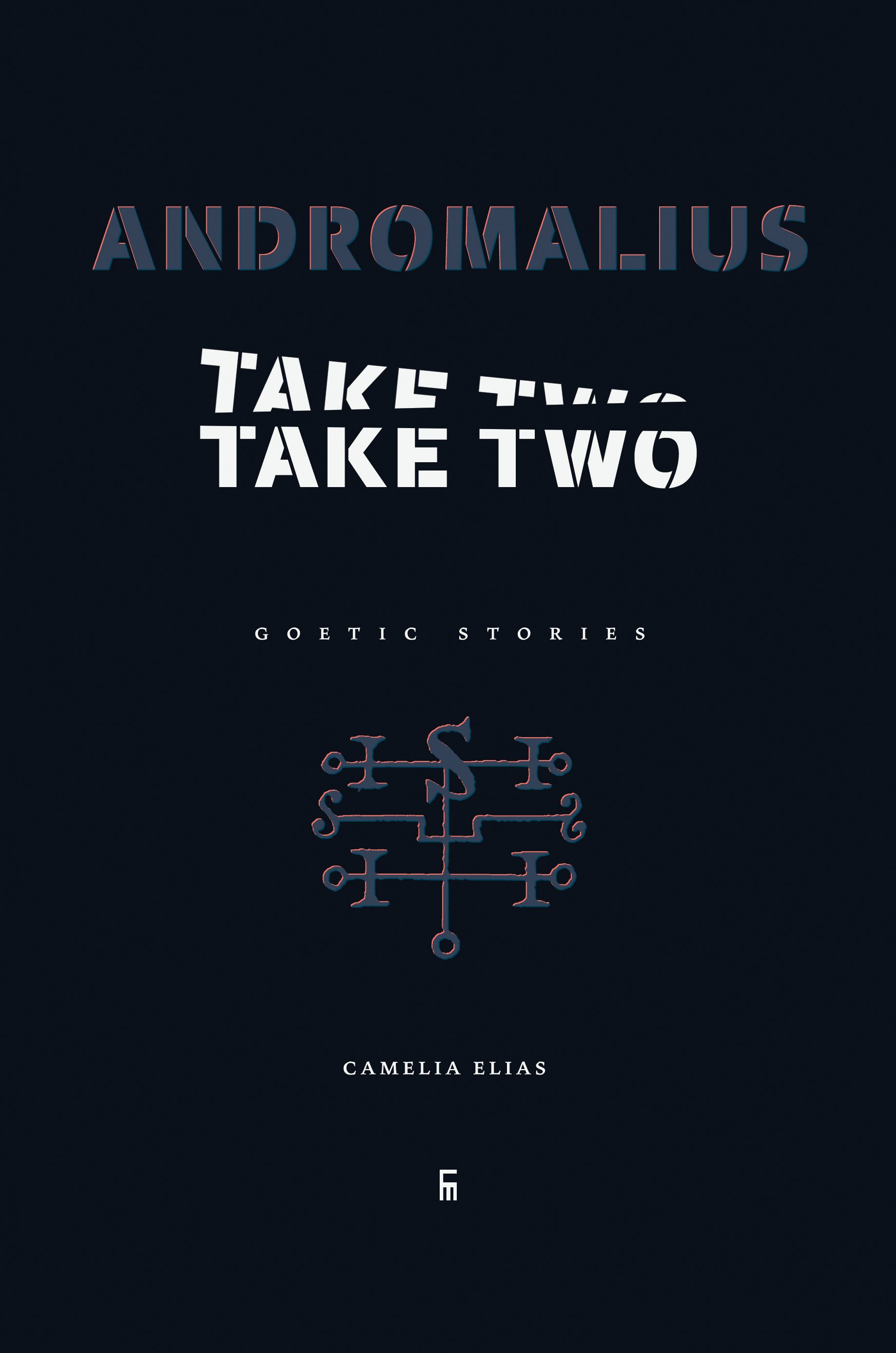ANDROMALIUS, TAKE TWO: GOETIC STORIES
CAMELIA ELIAS
The focus of this book is Andromalius, the 72nd demon in the Goetia, and how he functions as a mirror of Lucifer himself. In the process of illustrating the Lucifer/Andromalius entanglement, Camelia Elias tells stories about how Andromalius fares when dispatched to perform over and above what the Goetia prescribes. Andromalius doesn't merely deliver the mail, or 'find treasures, catch thieves, and punish the wicked,' but rather functions as a spy, orchestrates dreams, and divines for missing links. Elias also tells stories about how pacts are made and by whom, and what literature, poetry, and Zen have to say about demonic encounters.
These stories are not merely anchored in the set descriptions of how to conjure a demon and put him to work that we find in most grimoires. Rather, they are stories of collaboration that are entirely based on an assessment of skill in relation to style. This book discusses style in magic, and about how the magician, occultist, or fortuneteller as a stylist manipulates with the perception of the received images of spirit personalities in grimoires. What is the grammar of these images and how does it participate in creating a unique signature for the magician in his encounter with demons?
In practical magic that aims at evocation, invocation, and conjuration of spirits and demons, it's one thing to go by the instruction book and match a demon's office and function with what the scope of an operation is, and quite another to think about how authority is established in heaven and hell. Without being ceremonial about working with the grimoires, the author contributes original, scholarly, and penetrating ideas to the philosophy and practice of demonology.
THREE EDITIONS
The book is published as a standard paperback, special edition hardback, and ebook. Get the ebook here. For more info, and links to the other editions, go here.
CAMELIA ELIAS
The focus of this book is Andromalius, the 72nd demon in the Goetia, and how he functions as a mirror of Lucifer himself. In the process of illustrating the Lucifer/Andromalius entanglement, Camelia Elias tells stories about how Andromalius fares when dispatched to perform over and above what the Goetia prescribes. Andromalius doesn't merely deliver the mail, or 'find treasures, catch thieves, and punish the wicked,' but rather functions as a spy, orchestrates dreams, and divines for missing links. Elias also tells stories about how pacts are made and by whom, and what literature, poetry, and Zen have to say about demonic encounters.
These stories are not merely anchored in the set descriptions of how to conjure a demon and put him to work that we find in most grimoires. Rather, they are stories of collaboration that are entirely based on an assessment of skill in relation to style. This book discusses style in magic, and about how the magician, occultist, or fortuneteller as a stylist manipulates with the perception of the received images of spirit personalities in grimoires. What is the grammar of these images and how does it participate in creating a unique signature for the magician in his encounter with demons?
In practical magic that aims at evocation, invocation, and conjuration of spirits and demons, it's one thing to go by the instruction book and match a demon's office and function with what the scope of an operation is, and quite another to think about how authority is established in heaven and hell. Without being ceremonial about working with the grimoires, the author contributes original, scholarly, and penetrating ideas to the philosophy and practice of demonology.
THREE EDITIONS
The book is published as a standard paperback, special edition hardback, and ebook. Get the ebook here. For more info, and links to the other editions, go here.
CAMELIA ELIAS
The focus of this book is Andromalius, the 72nd demon in the Goetia, and how he functions as a mirror of Lucifer himself. In the process of illustrating the Lucifer/Andromalius entanglement, Camelia Elias tells stories about how Andromalius fares when dispatched to perform over and above what the Goetia prescribes. Andromalius doesn't merely deliver the mail, or 'find treasures, catch thieves, and punish the wicked,' but rather functions as a spy, orchestrates dreams, and divines for missing links. Elias also tells stories about how pacts are made and by whom, and what literature, poetry, and Zen have to say about demonic encounters.
These stories are not merely anchored in the set descriptions of how to conjure a demon and put him to work that we find in most grimoires. Rather, they are stories of collaboration that are entirely based on an assessment of skill in relation to style. This book discusses style in magic, and about how the magician, occultist, or fortuneteller as a stylist manipulates with the perception of the received images of spirit personalities in grimoires. What is the grammar of these images and how does it participate in creating a unique signature for the magician in his encounter with demons?
In practical magic that aims at evocation, invocation, and conjuration of spirits and demons, it's one thing to go by the instruction book and match a demon's office and function with what the scope of an operation is, and quite another to think about how authority is established in heaven and hell. Without being ceremonial about working with the grimoires, the author contributes original, scholarly, and penetrating ideas to the philosophy and practice of demonology.
THREE EDITIONS
The book is published as a standard paperback, special edition hardback, and ebook. Get the ebook here. For more info, and links to the other editions, go here.


